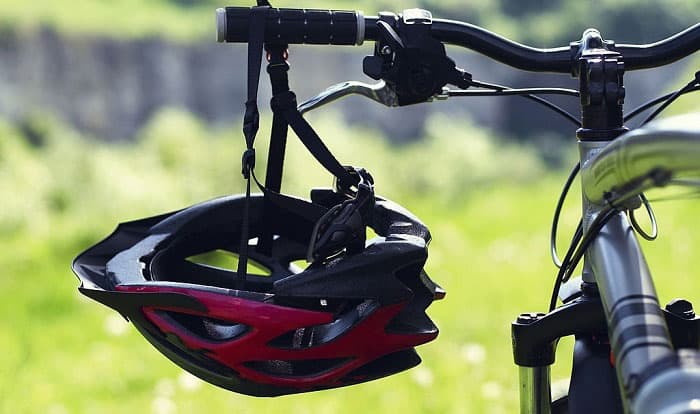Being a responsible biker means ensuring safety while on the road. Cycling should not only be about moving freely with your two wheels, but also about keeping yourself safe and protected. Thus, it is essential to wear the proper gear wherever you go.
Bike helmets are one of the most crucial gear you can use when biking. Wearing an efficient bike helmet properly is important to protect you from any untoward incident. But, how long do bike helmets last?
Your gear has a corresponding bike helmet expiration date. Your bike helmets should be replaced every three to five years depending on the frequency of usage and level of performance. This way, you can make sure that your helmet keeps you safe at all times.
Table of Contents
Why Replace Bike Helmets Regularly?
The purpose of bike helmets is to protect you from head injury. Based on helmet safety statistics, using a bicycle helmet can decrease the risk of getting head injury by up to 70%. Thus, a bike helmet is essential among cyclists.
It is important to replace bike helmets regularly so it can deliver excellent performance when on the road. If you are using your bicycle helmet frequently, this protective gear can get damaged due to sun exposure and moisture. As a result, it gradually compromises its ability to protect you in case of an accident.
Severe usage of your bike helmet exposes the gear to solvents, chemicals, UV light, fluids, and other substances. These kinds of environmental elements can directly affect the performance of your gear. It cannot absorb pressure and intense impact in accidents.
The gear’s inner foam liner that significantly protects you from collision or clash can deteriorate over time. The protective foam capacity to soften and absorb a blow from a crash or bang will greatly be reduced. Hence, it cannot perform efficiently when needed.
When Should You Replace Bike Helmets?
The bike helmet lifespan is from three to five years. It is ideal to replace bike helmets within this time frame. Aside from the bike helmet age, there are other factors to consider when you decide to replace bike helmets.
19970s-1990s designed helmet
The biking industry revolutionized since the 1990s. Technological innovations provide bikers the ease and comfort needed when cycling. It holds true with the biking accessories that continuously improve design and effectiveness to conform with today’s safety standard.
Helmets in the past did not come with a styrofoam liner. These helmets lack a very important layer that can protect cyclists from crash or impact. They come with thick and hard shells but there is no foam that can soften the blow from an accident.
Replace helmet after getting a crash
All cyclists must know that helmets should be replaced immediately after a crash or blow. The foam layer inside your helmet is specifically engineered for one-time use. After a crash, the helmet will not give you the optimum protection you need in the long run.
Even though it looks intact, due to an impact, no matter how hard or light, the force can weaken the foam liner of your helmet. It can break apart if you encounter another accident.
Replace helmet after dropping it hard on a surface
Any impact or blow can damage your helmet massively. The helmet can weaken if you drop it on a hard surface. There may be some cracks and damage that you cannot see, but this reduces your helmet’s effectiveness in the future.
You should not take chances even if you do not see any crack or damage on the helmet. Remember that the foam layer can be cracked or damaged under the protective thin shell. You can ask your manufacturers for a replacement at a minimal fee.
Helmets should meet the current safety standard
Helmets are constantly undergoing innovations and improvements to meet the present safety standard. The more updated your helmet is, the better protection you can get. You should look for a helmet that conforms with the safety standard set and approved by your government. An approved helmet comes with a sticker indicating that it passed a strict quality screening process.
Here are the approved international helmet standard you should consider when looking for bike helmet replacement:
- UN/ECE Regulation No. 22
- Australian Standard AS 1698
- New Zealand Standard NZS 5430
- Snell Memorial Foundation
- Federal Motor Vehicle Safety Standard No. 218
- British Standard BS 6658
- Japan Industrial Standard T8133
Helmet made by a reliable and honest manufacturer
Nowadays, helmets can come from manufacturers that did not secure safety standards. If you want an efficient and reliable helmet, you should look for manufacturers that conduct actual testing programs for their products.
Met, an Italian company, for instance, ensures that their products undergo a thorough test to check the efficiency and performance. They even claim that their product can last up to eight years. The brand guarantees that their products are made of quality shells and liners. The materials used are reliable and excellent for bike helmets.
How to Choose the Right Helmet?
Safety
The number one reason for wearing a helmet is safety. You should look for a helmet that can protect you in any type of biking activity. Always check for a sticker indicating that the helmet meets necessary safety standards.
Some helmets come with a multi-directional impact protection system. Meaning, it can reduce the rotational force and energy directed to the head in case of a crash or collision. As a result, the blow your head receives from an incident is significantly lessened.
Other brands like Bell offer progessive layering for better protection. These helmets have two separate layers of EPS foam in varying density to tackle different levels of impact and energy during a crash or accident. You can also see models with a tool-free removable chin bar design that transforms from a helmet into a full-face protection.
Helmets with multiple vents and bright color designs can enhance safety. The number of vents on a helmet provide air circulation or ventilation on your head. Vents can help reduce the contact between your helmet and head. As such, your head will not receive the entire energy or force in a serious crash or blow.
Brightly colored helmets, on the other hand, can improve your visibility while on the road. It reduces the chances of being hit by other road users.
Size
Of course, size matters when choosing the right helmet. A bigger helmet tends to wiggle when you move while a smaller one may give you discomfort. Make sure to get the right size to be comfortable while on the road. The size can go from 51cm to 63 cm, depending on the measurement of your head. You can also opt to get a one size fits all with an adjustable fit system.
Material and components
A good quality helmet should have a plastic shell and protective liner. With this build, the bicycle helmet lifespan can last up to five years.
The plastic shell protects your head and neck during an impact. The liner, on the other hand, safeguards your head by slowing the impact and distributing force to the foam. The helmet liners are usually made of polystyrene foam. Some helmets have honeycombed liner material that can absorb impact forces and rotational energy from a crash or collision.
Others have SPIN or internal shearing pads as an upgraded protection. It is helmet technology where silicone-injected pads help reduce impact or blow.
Conclusion
Bike helmets are specifically designed to absorb single impact. In case of a crash and deterioration, it is important to replace your headgear immediately. Aside from that, you should consider other factors like years of usage and environmental exposures. Thus, it is ideal to replace them every three to five years.
May this guide provide you with the right information on how often to replace a bike helmet and how long do bike helmets last. We ensure that the data are up to date to keep you on trend about innovations in the biking industry.

“I ride my bike to work for years, but is that enough? Our carelessness towards our surroundings has taken a toll on the environment. And now, everyone is responsible for changes; even the most minor contribution is counted. With this hope and spirit, I started with my partner to establish Biketoworkday to help more individuals commute to their work sites on their bikes.”



